Official: Girl told 911 'send the police now' as cops waited
Students trapped inside a classroom with a gunman repeatedly called 911 during this week’s attack on a Texas elementary school, including one who pleaded, “Please send the police now,” as officers waited in the hallway for more than 45 minutes, authorities said Friday.
Share:
More Stories
1:31
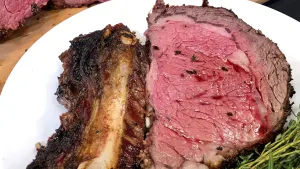
What's Cooking: Uncle Giuseppe's Marketplace's prime rib roast
309ds ago1:27

What's Cooking: Uncle Giuseppe's quiche lorraine
541ds ago2:34
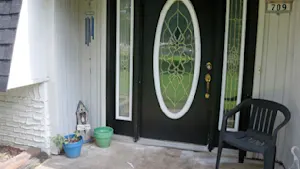
Guide: Safety tips to help prevent home burglaries
605ds ago0:48
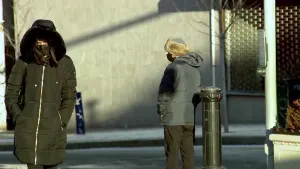
How to protect yourself against frostbite during arctic chill
650ds ago2:19
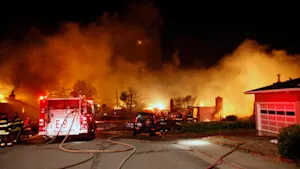
Guide: Safety measures to help prevent fires and how to escape one
753ds ago2:07
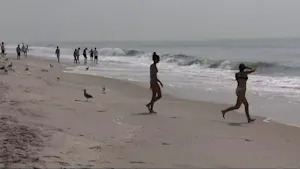
Tips on how to avoid confrontation with sharks while swimming in the ocean
837ds ago1:31

What's Cooking: Uncle Giuseppe's Marketplace's prime rib roast
309ds ago1:27

What's Cooking: Uncle Giuseppe's quiche lorraine
541ds ago2:34

Guide: Safety tips to help prevent home burglaries
605ds ago0:48

How to protect yourself against frostbite during arctic chill
650ds ago2:19

Guide: Safety measures to help prevent fires and how to escape one
753ds ago2:07

Tips on how to avoid confrontation with sharks while swimming in the ocean
837ds agoStudents trapped inside a classroom with a gunman repeatedly called 911 during this week’s attack on a Texas elementary school, including one who pleaded, “Please send the police now,” as officers waited in the hallway for more than 45 minutes, authorities said Friday.
The commander at the scene in Uvalde - the school district’s police chief - believed that 18-year-old gunman Salvador Ramos was barricaded inside adjoining classrooms at Robb Elementary School and that children were no longer at risk, Steven McCraw, the head of the Texas Department of Public Safety, said at a contentious news conference.
“It was the wrong decision,” he said.
Friday’s briefing came after authorities spent three days providing often conflicting and incomplete information about the 90 minutes that elapsed between the time Ramos entered the school and when U.S. Border Patrol agents unlocked the classroom door and killed him.
When the border agents were set to enter the room, there were as many as 19 officers in the hallway outside, McCraw said.
Ramos killed 19 children and two teachers inside the room. His motive remained unclear, authorities said.
There was a barrage of gunfire shortly after Ramos entered the classroom where officers eventually killed him, but those shots were “sporadic” for much of the 48 minutes that officers waited in the hallway, McCraw said. He said investigators do not know if children died during that time.
Throughout the attack, teachers and children repeatedly called 911 asking for help, including the girl who pleaded for the police, McCraw said.
Questions have mounted over the amount of time it took officers to enter the school to confront the gunman.
It was 11:28 a.m. Tuesday when Ramos' Ford pickup slammed into a ditch behind the low-slung Texas school and the driver jumped out carrying an AR-15-style rifle. Five minutes after that, authorities said, Ramos entered the school and found his way to the fourth grade classroom where he killed the 21 victims.
But it was not until 12:58 p.m. that law enforcement radio chatter said Ramos had been killed and the siege was over.
What happened in those 90 minutes, in a working-class neighborhood near the edge of the town of Uvalde, has fueled mounting public anger and scrutiny over law enforcement's response to Tuesday's rampage.
"They say they rushed in," said Javier Cazares, whose fourth grade daughter, Jacklyn Cazares, was killed in the attack, and who raced to the school as the massacre unfolded. “We didn’t see that.”
According to the new timeline provided by McCraw, After crashing his truck, Ramos fired on two people coming out of a nearby funeral home, officials said.
Contrary to earlier statements by officials, a school district police officer was not inside the school when Ramos arrived. When that officer did respond, he unknowingly drove past Ramos, who was crouched behind a car parked outside and firing at the building, McCraw said.
At 11:33 p.m., Ramos entered the school through a rear door that had been propped open and fired more than 100 rounds into a pair of classrooms, McCraw said. He did not address why the door was propped open.
Two minutes later, three local police officers arrived and entered the building through the same door, followed soon after by four others, McCraw said. Within 15 minutes, as many as 19 officers from different agencies had assembled in the hallway, taking sporadic fire from Ramos, who was holed up in a classroom.
Ramos was still inside at 12:10 p.m. when the first U.S. Marshals Service deputies arrived. They had raced to the school from nearly 70 miles (113 kilometers) away in the border town of Del Rio, the agency said in a tweet Friday.
But the commander inside the building - the school district's police chief, Pete Arredondo - decided the group should wait to confront the gunman, on the belief that the scene was no longer an active attack, McCraw said.
The crisis came to an end at 12:50 after officers used keys from a janitor to open the classroom door, entered the room and shot and killed Ramos, he said.
Arredondo could not immediately be reached for comment Friday. No one answered the door at his home, and he did not reply to a phone message left at the district's police headquarters.
Gov. Greg Abbott, who at a Wednesday news conference lauded the police response, said Friday that he was “misled,” and he’s “livid.”
In his earlier statements, the governor told reporters, he was repeating what he had been told. “The information that I was given turned out, in part, to be inaccurate,” he said.
Abbott said exactly what happened needs to be “thoroughly, exhaustively” investigated.
Abbott previously praised law enforcement for their “amazing courage by running toward gunfire” and their “quick response.”
Ken Trump, president of the consulting firm National School Safety and Security Services, said the length of the timeline raised questions.
“Based on best practices, it’s very difficult to understand why there were any types of delays, particularly when you get into reports of 40 minutes and up of going in to neutralize that shooter,” he said.
The motive for the massacre - the nation's deadliest school shooting since Newtown, Connecticut, almost a decade ago - remained under investigation. Authorities have said Ramos had no known criminal or mental health history.
During the siege, frustrated onlookers urged police officers to charge into the school, according to witnesses.
“Go in there! Go in there!” women shouted at the officers soon after the attack began, said Juan Carranza, 24, who watched the scene from outside a house across the street.
Carranza said the officers should have entered the school sooner: “There were more of them. There was just one of him."
Cazares said that when he arrived, he saw two officers outside the school and about five others escorting students out of the building. But 15 or 20 minutes passed before the arrival of officers with shields, equipped to confront the gunman, he said.
As more parents flocked to the school, he and others pressed police to act, Cazares said. He heard about four gunshots before he and the others were ordered back to a parking lot.
“A lot of us were arguing with the police, ‘You all need to go in there. You all need to do your jobs.’ Their response was, ‘We can’t do our jobs because you guys are interfering,’” Cazares said.
Michael Dorn, executive director of Safe Havens International, which works to make schools safer, cautioned that it’s hard to get a clear understanding of the facts soon after a shooting.
“The information we have a couple of weeks after an event is usually quite different than what we get in the first day or two. And even that is usually quite inaccurate,” Dorn said.
By Friday, though, enough was known to leave many parents struggling with dread.
Visiting a downtown memorial to those killed, Kassandra Johnson of the nearby community of Hondo said she was so worried the day after the attack that she kept her twin boys home from school.
Before she sent the 8-year-olds back, she studied the school building, figuring out which windows she would need to break to reach them. And she drew hearts on their hands with marker, so she could identify them if the worst happened, Johnson said, as she put flowers near 21 white crosses honoring the victims.
“Those kids could be my kids,” she said.
More from News 12
0:26

Optimum offering free calls, texts from the US to Jamaica due to Hurricane Melissa

Suspects arrested over the theft of crown jewels from Paris' Louvre museum
1:39

NY Attorney General Letitia James pleads not guilty in mortgage fraud case pushed by Trump
0:26
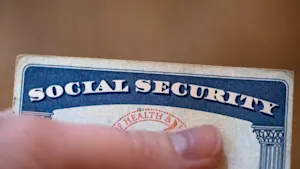
Social Security recipients get 2.8% cost-of-living boost in 2026, average of $56 per month

Prince Andrew says he's giving up the royal Duke of York title
0:33
